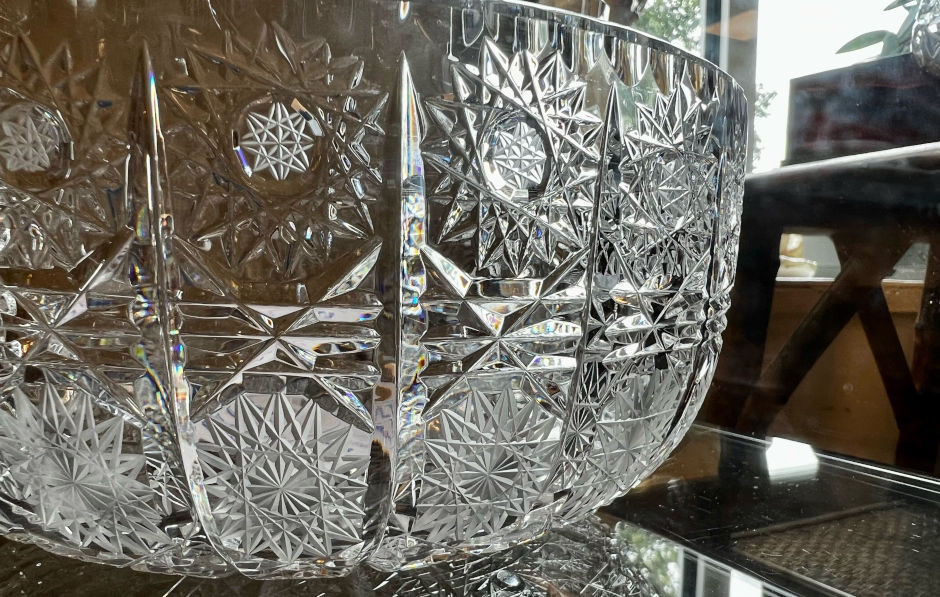
Glass antiques and vintage glassware will add elegance and beauty to any setting and have an enduring quality that never dates. Our latest guide tells you what to look for in this beautiful area of collectables.
What is glassware?
Many people think of drinking glasses when they hear glassware and of course drinking glasses do make up a section of glassware collectables. However, the term encompasses any articles made of glass, particularly but not exclusively bowls, vases, bottles, and ornaments.
Types of antique and vintage glassware
Antique and vintage glass bowls – these are a small part of antique glass tableware which includes dessert dishes and glasses and jelly moulds and basins.
Antique glass bottles – a wide area of antique and vintage glassware, this includes decanters, perfume bottles and factices, as well as apothecary jars and even hip flasks.
Antique glass vases and jugs – from the highly ornate cut glass pieces of the 18th and 19th centuries, to stylised shapes of mid-century pieces, this is a popular area for the beginner and the experienced collector. Prices can be in reach of the novice collector and the choice available to specialise in is wide.
Antique glass ornaments – antique glass Christmas decorations are particularly sought after by collectors and their delicate nature means that good quality examples are becoming harder to find in good, undamaged condition. Decorative ornaments such as those produced by Swarovski or Murano remain perennially popular but beware contemporary pieces.
The difference between crystal and glass
Crystal is a type of glass and although they look similar, crystal is made using lead oxide (hence lead crystal), has more sparkle and generally weighs more. To determine whether a piece is glass or crystal, gently tap it – crystal will make a bell-like chiming sound – or hold it up to the light where crystal will create a prism effect. If the piece is patterned, crystal will display finer, sharp patterns and cuts. However, an ornate pattern is not an automatic sign of crystal as manufacturers sometimes pressed the design into the glass using imprinted moulds, but pressed mould glass will have less distinct edges to the pattern.
Features of antique glass
Using a magnifying glass, check for imperfections such as bubbles which are common in antique glass. Antique pieces may also have a circular shape at the base, known as a punt mark or pontil mark, from where the rod was broken off during the glass blowing process.
Antique glass colours
Antique glass can have many colours created by the addition of different compounds during the glass making. Pink and red (cranberry) glass is typically the most valuable and was made using gold oxide, while blue (made using cobalt salts), green (uranium), and yellow or amber (sulphur) tend to command lower prices.
Antique and vintage glassware from Hemswell Antique Centres
The sheer amount of antique and vintage glassware on the market makes accurate identification quite difficult, especially for the novice collector, with pieces ranging from the clear cut glass decanters of the Victorian era, to the garish colours of mid-century Whitefriars glass. Buying from a reputable centre like Hemswell means you will be buying from dealers who specialise in antique and vintage glass and who will have done the research for you. We have over 250 pieces of Antique Glass available to view online, with the same amount of 20th Century Glass, while a visit in person to our centres will reveal thousands more pieces to browse and enjoy.